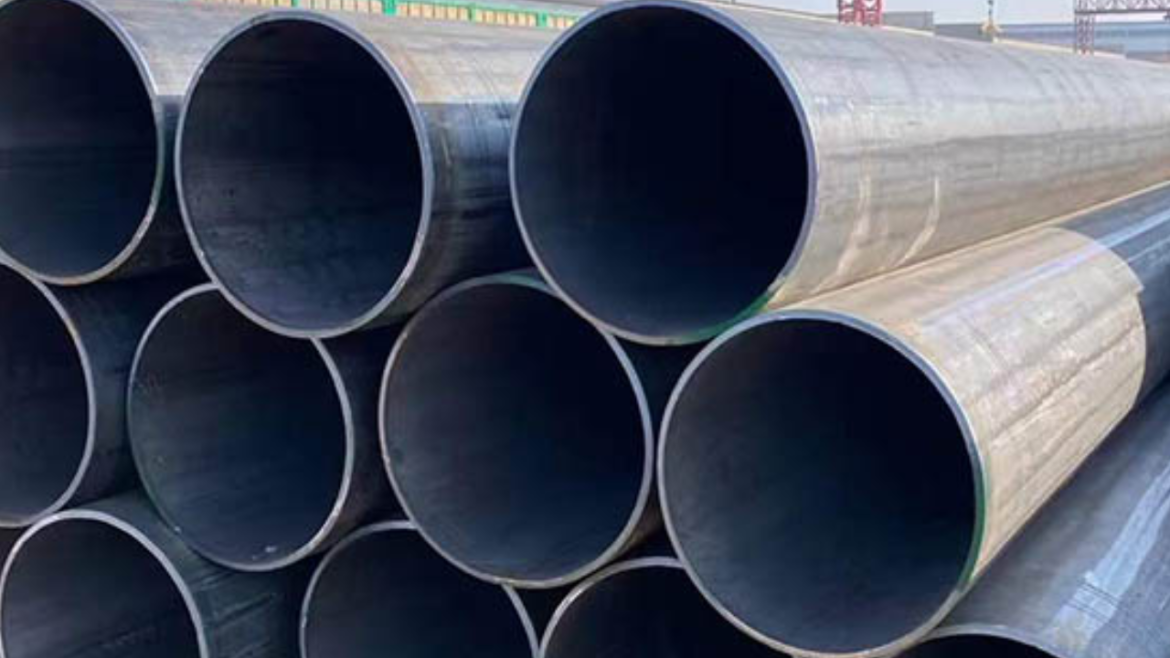The process of making an ERW pipe involves quickly heating the pipe’s edge to the welding temperature, extruding it, and then welding it together using the skin effect and proximity effect of high-frequency current. In comparison to ERW pipes, or seamless steel pipes, have the benefits of great precision in dimensions, low cost, and high production efficiency, as well as improved grain size and structure.
When compared to straight seam submerged arc welded pipe (LSAW steel pipe) of the same standard, erw pipe | electric resistance welded – UNIACERO has a faster production speed and no local thinning of the anti-corrosion coating at the welds. Its applications include casing for oil drilling, subsea oil and gas pipelines in the offshore oil industry, oil and gas pipelines, gas distribution pipes for trunk lines, and urban pipeline networks, among others.
What Is The Impact Of Temperature On ERW Pipe Performance?
The effect of temperature on the performance of ERW (Electric Resistance Welded) pipes varies depending on the material and application. ERW pipes are suited for a wide variety of temperatures. However, severe temperatures or swings might have an impact on the material’s characteristics and performance. To ensure the pipes’ integrity and operation, the right grade and specifications must be chosen based on the application’s temperature circumstances.
Environmental Considerations in the Production of ERW Pipes
The production of ERW (Electric Resistance Welded) pipes generally has several environmental considerations that are often more favorable compared to some other pipe manufacturing processes. Here are some key points to consider:
Energy Efficiency
The manufacture of ERW pipes emphasizes energy efficiency via welding with high-frequency electrical currents. This strategy reduces environmental effects by lowering energy use and emissions. ERW’s energy-efficient technique, paired with its material efficiency and recyclability, contributes to more ecologically friendly production, in line with steel industry sustainability principles.
Reduced Emissions
ERW pipe production prioritizes emissions reduction by using high-frequency electrical currents for welding, resulting in lower greenhouse gas emissions and air pollutants than traditional welding methods. This environmentally sensitive technique is consistent with sustainability goals, making ERW pipes an eco-friendly option with a low environmental impact during manufacturing.
Material Efficiency
ERW pipe production displays material efficiency by shaping a strip of steel into a cylindrical shape and welding the seam. This procedure produces less waste than other processes, which contributes to resource-efficient production. The emphasis on material efficiency is consistent with sustainable methods, which reduce environmental impact and optimize steel resource utilization in ERW pipe manufacture.
Recyclability
ERW pipe production adheres to recyclability criteria because the fundamental material, steel, is highly recyclable. At the end of the ERW pipe life cycle, steel can be recycled, reducing the requirement for new raw materials. This emphasis on recyclability adds to sustainable production processes, reducing environmental impact and creating a circular economy in the steel industry.
Environmental Compliance
ERW pipe manufacturing prioritizes environmental compliance by conforming to strict rules and requirements. This commitment ensures that industrial operations satisfy particular environmental standards, such as waste disposal, pollution control, and energy efficiency. By adhering to environmental regulations, ERW pipe manufacturers help to reduce their environmental impact and promote sustainable development in the steel industry.
Coating and Corrosion Protection
Coating and corrosion prevention in ERW pipe manufacturing entails using environmentally friendly materials and application procedures. Manufacturers hope to extend the life of their pipes and reduce the need for replacements by prioritizing sustainable coatings. This ecologically sensitive method is consistent with responsible production procedures, reducing the overall environmental impact of corrosion protection in the fabrication of ERW pipes.
Water Usage
ERW pipe production exhibits environmental responsibility by using as little water as possible. ERW manufacturing uses substantially less water than other techniques that use more water. This strategy promotes sustainable behaviors and is especially beneficial in areas with limited water resources. ERW pipe manufacturing aligns with environmentally conscious manufacturing by reducing water usage.
Conclusion
It is crucial to note that ERW pipes have certain environmental benefits. Their overall impact is determined by a variety of factors, including the energy sources utilized in manufacture, waste management policies, and the exact materials and coatings employed. Manufacturers can use sustainable practices to further reduce the environmental impact of ERW pipe manufacture.

